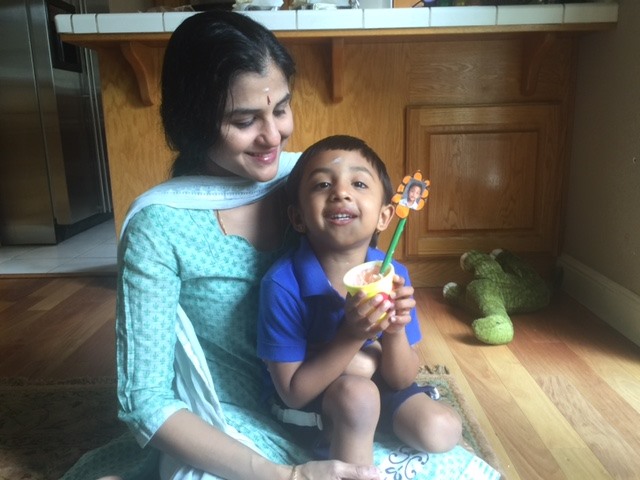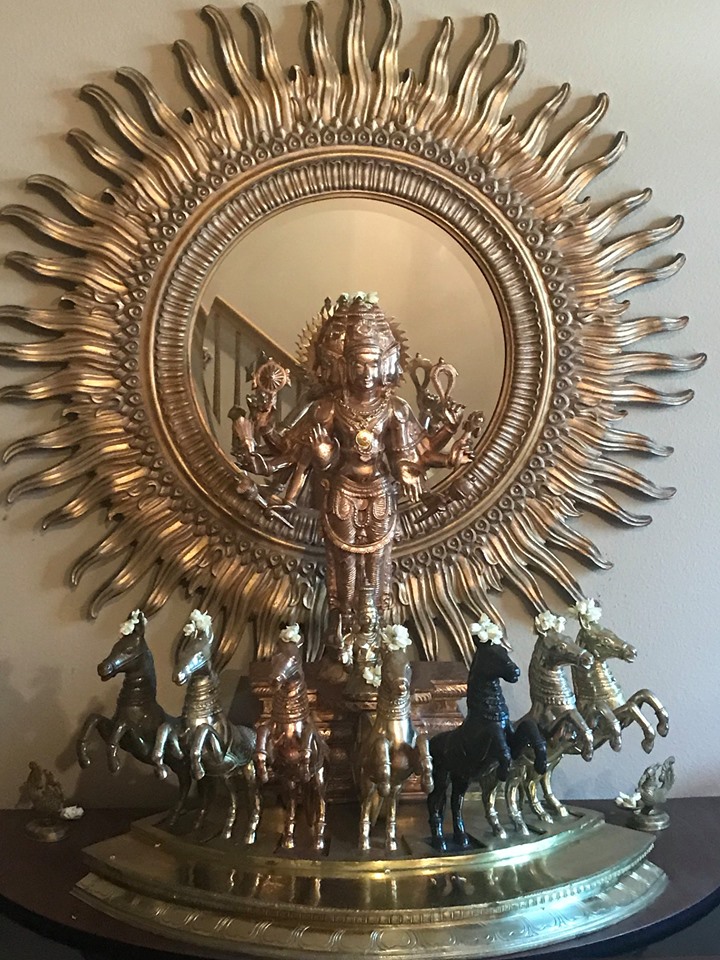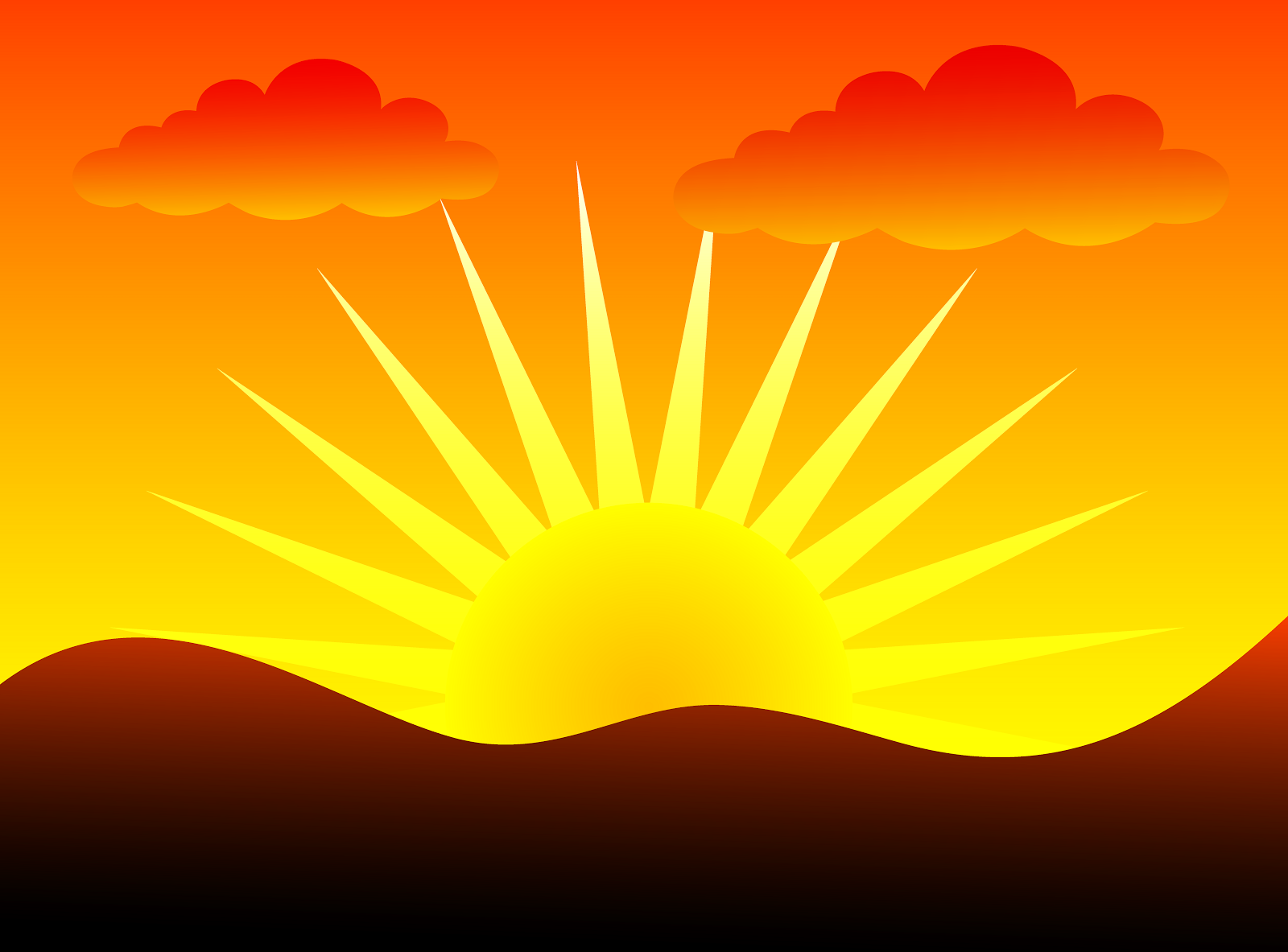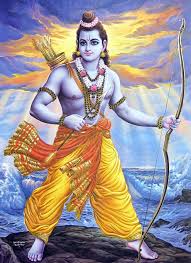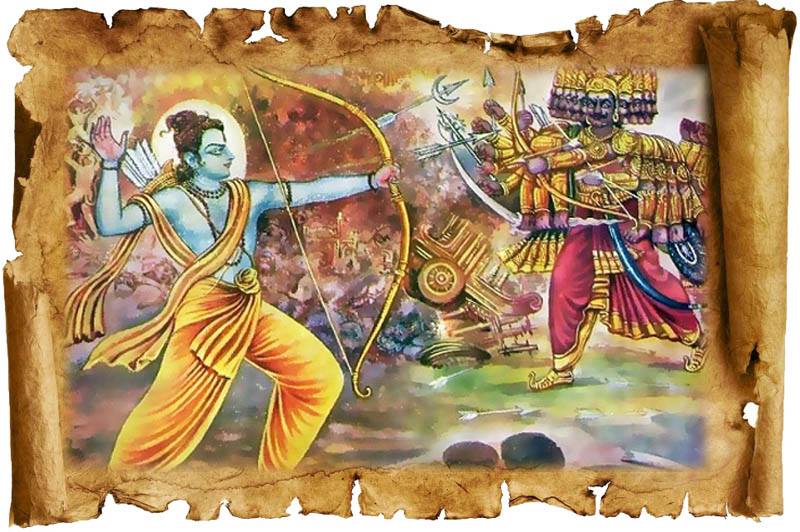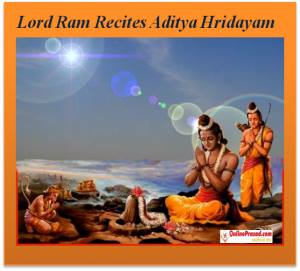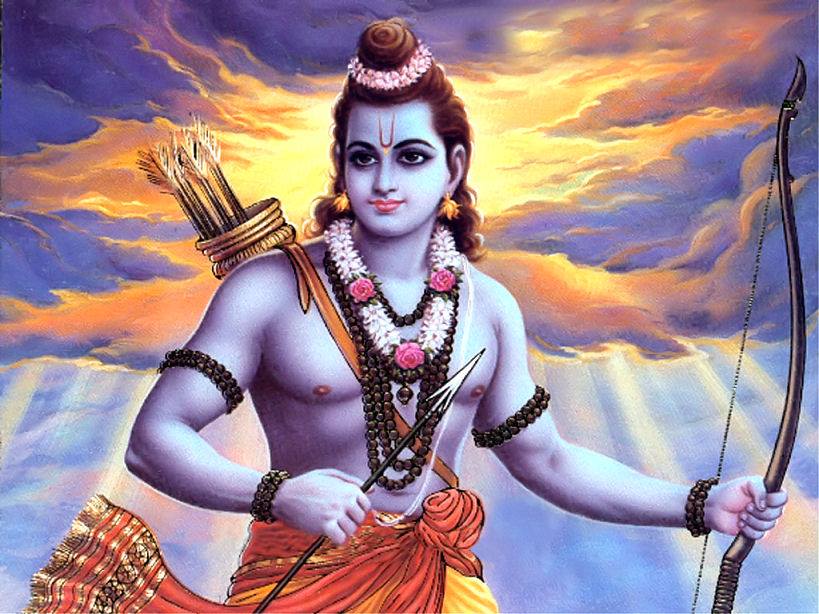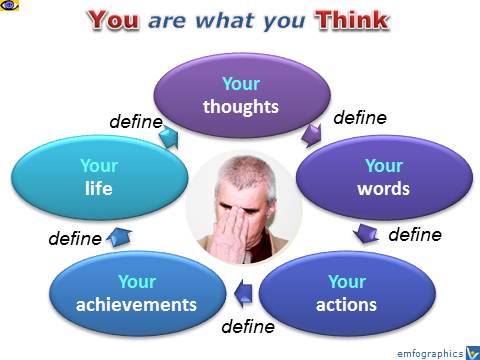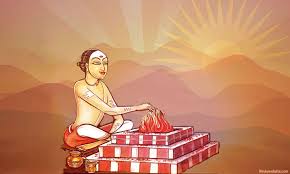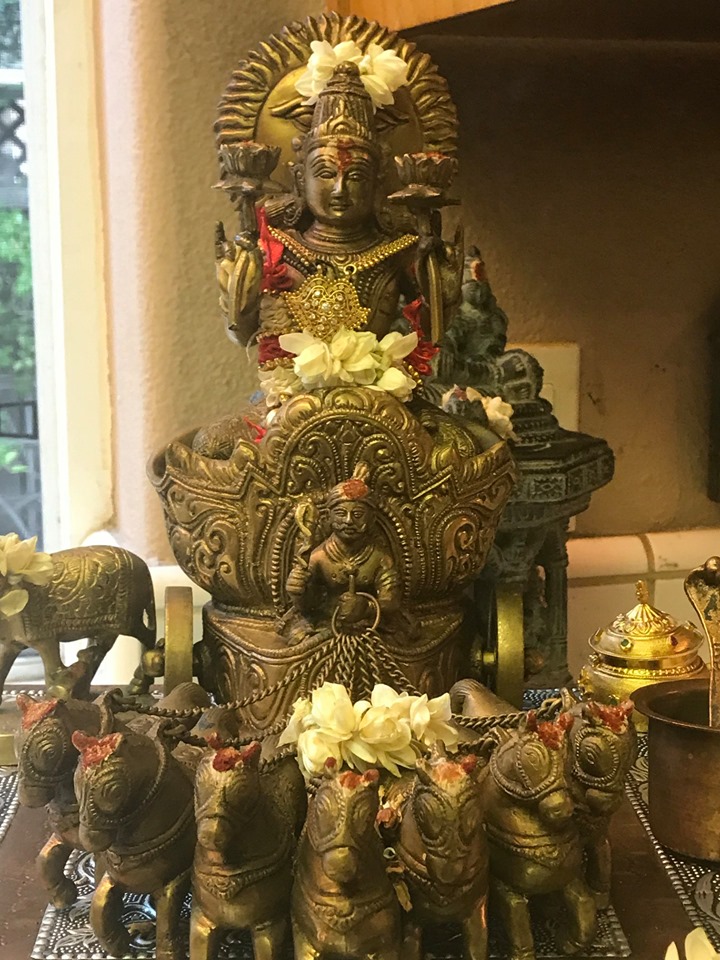
With today’s update I am finishing my blog on Aditya Hrudayam. Before bidding adieu I would like to say a few words about the making of the blog. I would like to acknowledge the people/characters and the events that galvanized the blog.
As those who know me know already, this blog is a concoction of three of my greatest passions in life namely sun, science and samskrita shlokas. It started (unknown to me then) in Jan 2009 with an idol of lord Surya. This Surya in photo 1 is the primal force that played a major role in transforming me into a heliophile. The Surya in photo 2, the most adorable of all, is my chief source of inspiration for this blog and beyond. The third Surya I like to acknowledge is a stunning sculpture that decorates our formal living room thanks to Kyle Tortora (photo 4) of Lotus Sculpture https://www.lotussculpture.com/. Artisans from Swamimalai took two years to sculpt this masterpiece. Though priced at a premium the gratification of gazing and chanting Aditya Hrudayam to this showpiece every morning (which I do to my heart’s content) is unparalleled and priceless.
The critical inflection point for this blog came in the summer of 2017 in the form of the Great American eclipse (photo 5). This cosmic bliss lasted less than 2 minutes in real time but was so gripping that it left in me a lifetime’s worth of impact. In some ways it changed my perception of life. It was after this spectacle I learnt Aditya Hrudayam so effortlessly in less than one week. As a scientist what fascinates me incredibly is the fact that this hymn composed in Treta Yuga accurately states several facts about sun which modern science with all its technological advantage could discover only much later. Take the depiction of sun for example. The seven horses represent the seven colors of the visible spectrum and the serpents that yoke the seven horses are symbolic of the wavy nature of light (snakes like light move curvy not a straight line). What else can I say!! That is precisely why, in a very spontaneous/spur of the moment type of thing, I decided to blog Aditya Hrudayam, focusing mainly on the scientific themes. Since last summer I have been methodically documenting one shloka a week with my commentaries and scientific interpretations. Up until now I never knew I had this kind of discipline in me. In fact, outside of the realms of daily life and work routines this is the only time where true to self I have shown some form of commitment, discipline and sincerity in doing something solid and productive. This whole blogging experience has been intellectually stimulating, emotionally empowering and therapeutic, all at the same time.
Finally before wrapping up, I would like to acknowledge all the followers from the bottom of my heart ( there are a few and I know you all). Your interest was a great tonic. Thanks for your time, interest, patience (with some of the lengthy posts 😮), likes, comments and suggestions. May lord Surya bless you with His divine and luminous intellect and lead to success in all your endeavors.
धन्यवादः पुनः मिलामः च । Thanks and Goodbye!
